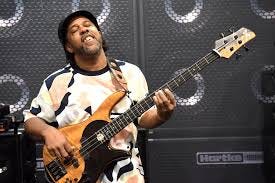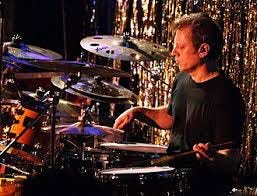I am currently working on a couple books of my own (hopefully they will be done fairly soon), but over the past few months I have been absolutely thrilled to be helping a good friend of mine, Micah Voraritskul, on his first book. I don’t say the following lightly, but this book is excellent. It also has one of the best titles I have ever seen (like, I am jealous of it!):
Human is the New Vinyl: Why Human Creativity Still Matters in the AI Revolution
Here is a draft of the eventual cover art:
The book is being published by Wisdom Work (the same publisher that I used for Camping with Kierkegaard) and should be in print in mid-August. I will certainly be sending out more information as soon as it is available.
Anyway, for my paid subscribers, I will be reaching out to you in the next few days with an opportunity to join the launch team for the book and get a chance to read it before it is even in print! So keep your eyes open for more details about that.
In the meantime, I want to get you all excited about this book and introduce you to Micah (who you can connect with at his website). I am also making the comments open to everyone on this post so that if you have any questions about the book or are especially interested in AI, you can let Micah and I know.
So, as a way of both getting you hyped about his forthcoming book and also introducing you to some of the philosophical ideas that underlie it, I am sharing with you all the “Foreword” that I have written for it. I should note that I told Micah that he was entirely welcome not to use it if he decided that he just wanted to have the book open with his own Preface - rather than a musings of a postmodern philosopher, ha!), but in any case, I hope that you find the following of some interest and I really hope that you, like me, are as excited about this book making onto bookshelves very soon!
Foreword (Maybe) to Human Is the New Vinyl
My 15-year-old son, Atticus, is a very talented musician. He is currently attending a fancy fine-arts high school studying percussion and jazz. Well, as you can imagine, getting him to this point has involved going to many, so very many, elementary and middle school band and orchestra concerts. Have you ever gone to any of those? Unless you have a child who has been part of such events, I hope that the answer is “no.” Look, let’s be honest and admit that those things suck. The playing is almost always mediocre, if not straightaway horrible. And yet everyone cheers like they have just watched living legends all perform together in a one-time-only gig.
For what it is worth, my dream team for that show would involve Sarah McLachlan on lead vocals, Victor Wooten on bass, Dave Weckl on drums, Ben Folds on piano and backing vocals, and some guest bars dropped by Method Man.





Yeah, I get it. The list of musicians I just mentioned works for a game of “tell me you are in your mid-40s without telling me you are in your mid-40s.” Sigh.
Anyway, the reason that folks cheer so loud at the middle school concert is not due to the exceptional musical performance, but because their kids created music. The same is true for the art exhibition in the school hallway leading to the auditorium where the concert occurs. Those parents think that the art is more exciting than seeing a lost Rembrandt because it is reflective of their child’s creative activity. Asking whether the performance or the painting is aesthetically good or bad is not really the right question because it appeals to the wrong criterion. What matters is the personal relationship to the child who painted, drew, sung, or played. The beauty lies therein.
Such a relational dynamic to cultural production extends far beyond the relationship of parent to child. Consider my own dream band described above. The reason that all those folks would be part of the band is directly anchored in not just that I really like their music, but in when I came to really like it. They were all prominent when my own tastes were being shaped in high-school—class of 1995 stand up! I have heard that the music you like in college will be what you like the rest of your life. Well, I am neither a sociologist nor a cultural anthropologist, but I can attest to the fact that the best rap, metal, jazz, and nearly every other genre occurred in the mid to late 1990s!
When I speak to my current college students, though, they are all collectively deceived into thinking that the stuff coming out right now is much better.
They are fools.
In any case, my attachment to these musicians, like my attachment to my own son, is not something that is easily fungible. Someone that sounds “like” Sarah McLachlan (for example, Natalie Taylor) is still amazing, but it is not the voice that invited me into my sense of sonic desire. Something that sounds “like” my son playing marimba (for example, all the other kids in his fine arts percussion studio) just isn’t the same as hearing the notes played by Atticus.
But why not?
Well, the complicated answer, drawing on a good dash of hermeneutics and existential philosophy, is that selfhood is affectively constituted in concrete phenomenological ways, which are themselves often relationally situated before any cognitive assent is even warranted.
Ugh. I can hear my wife tell me that “Dude, stop sounding like a douche. Nobody here cares about existential philosophy and nobody knows what hermeneutics means.” She is probably right.
Ok, so here is a simple answer:
We are humans.
Humans feel stuff before they think stuff.
Relationships are typically where we feel things the most deeply.
This idea also hits on why we tend to be the sort of beings who talk about and prize “authenticity.” Think about it, the replica of the Marc Chagall painting might be indistinguishable and yet it isn’t the one that he actually touched, spent time in front of, and formed.
Those points of embodied contact matter.
The only reason Jesus would have said “Noli me tangere” is because people want to touch things. We also want to be moved by things.
We all want to matter and find meaning in our world.
I have a reprint poster of a Claude Monet painting hanging on the wall at home. It is of a dirt path through some irises in his garden. I bought it after seeing the original when I was in Europe in 1997. I was 19, a broke sophomore in college, and I spent my very limited funds during a study-away trip on this print because I was so affected/impressed/moved by the idea that the path was as important as the destination. Sure, that idea was especially relevant to me in the midst of trying to figure out what to do with my life, but I actually think it is reflective of something more profoundly true for humans.
We are meant to keep moving, to keep changing, to keep becoming. We are always on paths, but we only occasionally reach destinations. Anchoring our identity, our meaning, and our value in achievement will inevitably leave us cold and frustrated. Alternatively, when we rest into the task of selfhood as never truly finished, then we might find some peace despite so many temptations to despair.
The reprint of that Monet painting conveys all of that philosophical significance, but were it to get damaged or destroyed, say, I could easily order another one for a few bucks on Amazon. The original, the authentic, the one that Monet painted, the one that bears the traces of his inspiration, well that is a different story. That one is not just priceless because there is only one (scarcity is not the true locus of value), but because it holds the actual marks of his effort. The reprint “looks” the same, but it is not identical because it is not purely the product of his creative life, but instead the product of a printing press and global supply chains. Intermediaries mute impact.
I still love that print, but because of what it signifies about my own experience, not because it of what it signifies about Monet’s.
Importantly, the print is still of the image that was created by Monet. Listening to the recording of my son’s concert is not the same as being there in the room, but it is still the record of his performance. So, like physical imitations of Plato’s forms, there is still meaning to be found, but it is now at a distance.
What if that distance becomes so great that there is no longer any direct tie to the humanity of the author? What if the “death of the author” gets extended from simply an interpretive invitation to a production methodology?
Well, precisely because humans care about authenticity, about originality, and about being relationally affected, we also care about not being duped, deceived, and tricked.
Catfishing is fine when someone uses some chicken livers for bait, but it is awful when someone uses a fake social media profile.
We hate being deceived because we care about the role of trust in our social lives. When that trust falters, we often struggle to find our footing as people.
So what happens when the recording of your son’s middle school concert is actually entirely generated by Artificial Intelligence when prompted by the instructions: “Give me a performance of this particular piece, but make it sound like it was played by 6th graders”?
Does that change your sense of things?
It would change mine.
What if the print of the Monet is not actually “of” an original by Monet, but simply produced by telling AI to “paint me a picture of a path through a garden in the style of Monet”?
I might still like the philosophical point, but I am also pretty sure it would not be hanging on my wall.
Or, what if the new album “by” your favorite artist is actually generated entirely by AI?
I don’t really think that it is an album “by” them in the first place.
Even if things are indistinguishable in many ways in such cases, it still “feels” like I have been deceived in ways that matter.
What gets lost in the technology is the humanity that should be the origin of culture. Creativity is not something that can be “artificial.” The human condition is not something that can be taught through back-propagation. Life is felt.
Now, of course artists have always used technology. Indeed, the ancient notion of “techne” as a kind of knowledge is a matter of knowing how to do particular things with the appropriate tools for the task. For example, Monet used brushes and paints that had been produced by the best enginering of his day. Technology was used to produce the CD of the Wu-Tang Clan that I listened to over and over such that the words, “M-e-t-h-o-d-man, hey you, get off my cloud . . .,” are now just second nature to me whenever I think about that track. And, like the reprint of that painting, there were millions of those same CDs available around the world. Even the amplification that allows me to hear the notes played by Victor Wooten at a live concert is produced through technological manipulation. That is, he is not “really” playing that loud.
In fact, I was at a metal concert recently when the power went out as the band hit the chorus on the first song. It was bizarre. Everything went super quiet and yet the musicians played a bar or two before realizing the problem. Without technology, concerts just wouldn’t work the way that they do now.
Moreover, my wife has video of every single one of our son’s school concerts. There is something very meaningful about those audio-visual records of our memories. They allow us to track time in ways that contribute to our enjoyment of the fact of finitude.
Accordingly, technology cannot possibly be easily dismissed as simply a problem to be solved. Even if there are some worrying aspects about some technology (like the mental toll social media takes on all of us, but especially on teen-agers), it is also what facilitates some of the basic structures of the world we inhabit. And even if we would like to change some of that world, it is unlikely that we want to change all of it. Technology facilitates who we have become. Without it, we would be unrecognizable to ourselves.
Nonetheless, AI seems different. It seems scarier. But why?
I think that the answer here lies in the way that it strips us of our ability to assess what is authentic from what is not. It gives us reasons to distrust the legitimacy of our own experience. That is terrifying because in some sense when we are duped by AI generated content (whether music, painting, acting, a political ad, or whatever), our own capacity of judgment has failed us.
AI makes it difficult to be able to tell what is “real.”
This quickly leads to very legitimate frustration.
That frustration, though, again reflects our humanity. It anchors us in the riskiness of existence. Trust is required and so when we struggle to know what to trust, we struggle to find our footing in the world.
Unsurprisingly, whenever technology begins to change things significantly, some folks resist the change by “going analog.” Rather than streaming music on an iPhone, they buy record players and spend enormous amounts of money for the “vinyl” versions of their favorite albums. Even if it were shown that the digital sound is “better” on all markers, these folks would insist that the vinyl is far superior due to its “feel.”
Ah, there it is again, we feel before we think. Affect is prior to effect.
This general embrace of the analog shows up in all sorts of human endeavors. Mountain bikers often “underbike” and get older or less sophisticated bikes to ride particularly gnarly trails so that they feel more connected to the bike, the trail, or the risk. Many backpackers will eschew the ultralight super-expensive new gear in order to try hiking like their grandparents would have. Sometimes craft home builders or craft beer brewers will only use older tools and approaches in order to return to some sort of lived proximity to the work in ways that can get lost with the speed and precision of technological advancements. There is even a cow’s hoof trimmer that I regularly watch on YouTube who sometimes puts down his grinder in order to do everything with the old-fashioned knife and other traditional instruments.
Such warriors of an analog world are not rightly dismissed as luddites. Rejecting technology is counterproductive to flourishing. But, being reflective about what technology to embrace and why to do so is simply part of what being human has always required. Indeed, I am sure that there were likely folks saying that fire was going to ruin society. There were probably others who kept protesting against wheels as canceling the importance of triangles. And I imagine that some folks still prefer to dig a hole than to flush a toilet. In all those examples, though, technology legitimately solved problems in ways that led to a more robust human experience.
In many ways AI is already doing that today in the areas of medical diagnosis, space exploration, and climate modeling. We would be wrong to oppose such innovation.
When it comes to culture, however, things are not so clear. I don’t want an AI generated version of my son’s concert. I want to see my son struggle to learn the part and risk messing it up when he plays it. I want to hear the new bars by Method Man that reflect his own growth as a person who is no longer in his 20s. I want to see the development of brush strokes that are extensions of the person using it.
Simply put, I want to be moved by what moved someone else.
Maybe people will find ways to incorporate these new tools in ways that do not minimize the role of humanity, but that makes it more profound in light of the technological advancement. It is too early to tell, but there is reason for cautious hope in this regard.
One of the most significant reasons for such hope is the work being done by folks like Micah Voraritskul. From his visionary efforts with the “Verified Human” collective to his profoundly compelling arguments in this book, he shows that also part of what makes us human, all too human (as Nietzsche would say), is our ability to navigate new challenges in light of a history of navigating old ones.
When reading this book, I found myself thrown back on my own affective existence. His personal stories resonate deeply with my own. His excitement about what is possible helps me overcome my own dread about what could also occur.
Ultimately, this book is not about technology, but about humanity. His. Yours. Mine. Ours.
Micah does not deny the uncertainty of the future, but he inspires a shared trust that our humanity will remain intact whatever comes.
If human is the new vinyl, then I am ready to go buy a record player to hear the way that these tracks just feel different and sound better.
No matter if you are the person who stands in line for the new iPhone or the person who rides an old bike with 26-inch tires in order to feel all the trail feedback, our humanity is common. This book beautifully illustrates what is so extraordinary about that most basic fact about who we are.
Vinyl is compelling because it presents all the scratches and pops along with the deep lower tones of the notes. Micah shows us how life works the same way. The messy bits are not to be eliminated, but embraced as part of the texture that makes things interesting.










Aaron. Thanks so much for this, brotha. What a great piece, even as a standalone! Your brain is something else. Imagine what it could have been if you hadn't done all those drugs! :)
Dude, this is brilliant. So much intense, layered thinking going on here. So much meat. It's a pretty incredible essay. And it is also painfully, heart-wrenchingly sad. Grateful for your mind.